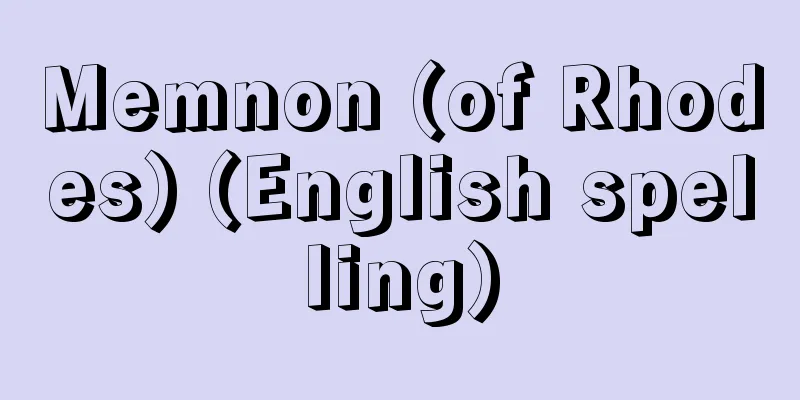Emperor Reigen

|
Year of death: August 6, 1732 (September 24, 1732) Year of birth: 25th May 1654 (9th July 1654) Emperor of the early Edo period. Prince Takamiya, the 19th son of Emperor Gomizunoo. His mother was Sono Motone's daughter Kuniko (Shinkogimon'in). His given name was Shikinin. He was proclaimed prince in 1658, ascended to the throne on January 26, 1663, and ascended to the throne on April 27 of the same year. Upon ascending to the throne, his father Gomizunoo ordered Hamuro Yorinari and three others to serve as "new lords" (later known as Gisō), instructing them on the conduct of the emperor and guiding him in his academic studies. He also selected people to establish a new position of attendant, and took care to raise the young emperor. However, the emperor was naturally strong-willed and courageous, and as he grew older, his reckless behavior became more noticeable, so Gomizunoo strengthened the Gisō's duties from raising the emperor to supervising the imperial court. Gradually, conflict between the court nobles who supported the In faction and the emperor's attendants became more apparent. After Gomizunoo's death, the emperor appointed Ichijo Kaneteru as regent, overriding Konoe Motohiro, who was a member of the In faction and took a line of cooperation with the shogunate. Ichijo Kaneteru sought to reorganize the imperial court with his attendants as his center, which invited interference from the shogunate. After abdicating in 1687 (Jokyo 4), Ichijo continued to actively implement the Insei system, but when Konoe Motohiro became regent in 1690 (Genroku 3), Ichijo's authority was restricted, and an era of cooperation between the court and the shogunate began again. Aiming to restore the imperial court, he revived the Daijosai and the investiture ceremony, and paid attention to the organization of court records and court customs. He also excelled in literature, and in the art of waka poetry he formed a poetry circle at Reigen-in, centered around his close aides. His works include the poetry collection "Momotsubu-shu," the poetry treatise "Ippo-sho," and "Shugakuin Gokoshinki." He is buried in Tsukinowa Mausoleum at Sennyuji Temple in Kyoto. <References> "Modern Court Poetry Theory Collection," edited by the Modern Court Poetry Theory Collection Publishing Association; "Early Shogunate and the Emperor," Seiji Hirai (Lecture Series on the Emperor in Premodern Times, Vol. 2) (Mother Miwa) Source: Asahi Japanese Historical Biography: Asahi Shimbun Publications Inc. About Asahi Japanese Historical Biography |
|
没年:享保17.8.6(1732.9.24) 生年:承応3.5.25(1654.7.9) 江戸前期の天皇。後水尾天皇の第19皇子,高貴宮。母は園基音の娘国子(新広義門院)。諱は識仁。万治1(1658)年親王宣下,寛文3(1663)年1月26日践祚,同年4月27日即位。即位に当たり父後水尾は葉室頼業ら4人に「新主御用」の勤仕(のちの議奏)を命じて天皇の行跡や学問指導を指示,また人物を選び近習番を新設,幼い天皇の養育に配慮した。しかし生来性質英邁剛毅な天皇は,成長に伴い放埒な行動が目立ち,後水尾は議奏の職掌を天皇養育から宮中監督へと強化。次第に院派の公家衆と天皇近習衆との対立が表面化するようになる。後水尾の死後,天皇は院派で幕府協調路線をとる近衛基煕を越階して一条兼輝を関白に据え,近習衆による自己を中心とした朝廷再編を目指したため幕府の干渉を招いた。貞享4(1687)年譲位後も院政を積極的に展開するが,元禄3(1690)年近衛基煕が関白に就任すると,その権限は制限され再び朝幕協調の時代となる。朝廷復旧を志向し大嘗祭,立太子式の朝儀を再興,有職故実や宮中記録の整備に意を払った。文芸にも秀で,特に歌道では側近公家を中心に霊元院歌壇を形成した。歌集『桃蘂集』,歌論書『一歩抄』,『修学院御幸宸記』などの著作がある。京都泉涌寺内の 月輪陵 に葬られる。<参考文献>近世堂上和歌論集刊行会編『近世堂上和歌論集』,平井誠二「前期幕藩制と天皇」(『講座前近代の天皇』2巻) (母利美和) 出典 朝日日本歴史人物事典:(株)朝日新聞出版朝日日本歴史人物事典について 情報 |
>>: Li Yuan Hong - Li Yuan Hong
Recommend
Hispania
…Spain is the English name, and in Spanish it is ...
Parasitic fly - Tachinidae
A general term for small to medium-sized insects b...
The Great Fire of Meguro Gyoninzaka
The Great Fire of Edo in 1772 (An'ei 1). It wa...
Small items - Komononari
A general term for miscellaneous taxes in the Edo...
pañca-skandha (English spelling) pancaskandha
…A classification method of existence that has be...
Auxiliary rocket - Hojo rocket
In rocket vehicles, this is a general term for roc...
Izumi - Izumi
…It is widely distributed from central Honshu sou...
Courajod, L. (English spelling) CourajodL
...The international nature of this style gave ri...
Rheumatic fever - Rheumatic Fever
◎A type of allergic reaction [What kind of disease...
bell tower
… [Hibino Takeo] [Western] A bell tower stands be...
Slavic - Slavic
It is a major language group belonging to the Eas...
Santo - San
During the Edo period, the three territories were ...
Metachromatic leukodystrophy - Metachromatic leukodystrophy
…(1) Demyelinating diseases caused by lipid metab...
Chinese meaning - Karagokoro
… We have looked at examples of the use of 〈yamat...
Bhera Ghat (English spelling)
…They produce cement, weapons, textiles, carpets,...









